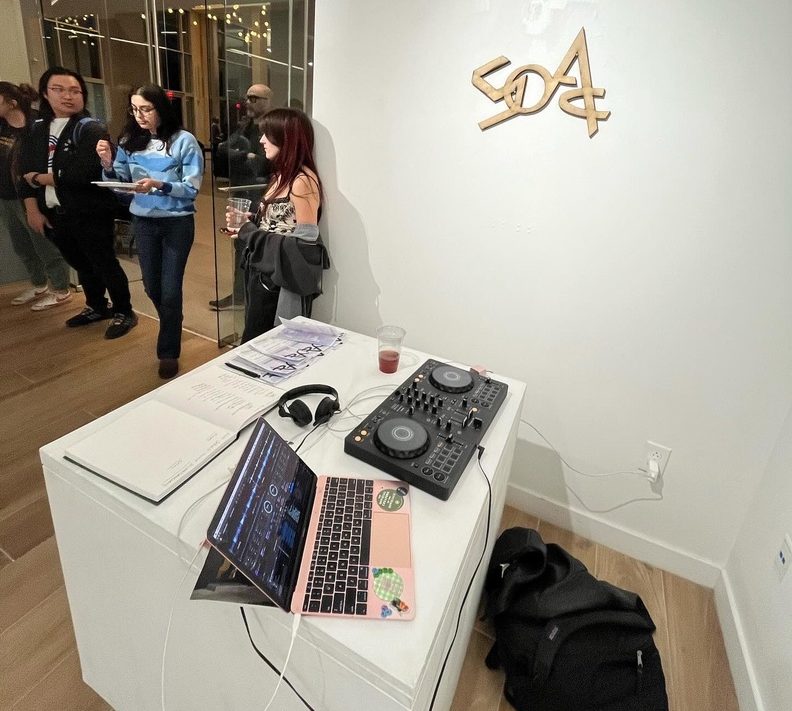It is rare that a description of a musical written by the very theater showing it sells itself short. The Dallas Theater Center’s four-sentence description of Stagger Lee did just that.
Stagger Lee, written by Meadows Prize winner Will Power, spans multiple generations and genres. Each character or set of characters was based off a myth from a song popular with the African-American culture at that time. The audience is taken to six different cities, emblematic of the fact that the quest for the American Dream is not confined to wealth, states, or regions.
We begin in Lyon, Mississippi at the end of the 1800s. Delilah, played by the exceptional vocalist Tiffany Mann, sings a goodbye to her parents and children before she joins her husband in the promised land of St. Louis.
Delilah travels across space and time to arrive in St. Louis in 1910. She reunites with her husband Billy, played by Cedric Neal, her brother Johnny, and his girlfriend Frankie. Johnny, played by Brandon Gill, is a naive boy trying to be a man but looking for validation in all the wrong places – and women. Saycon Sengbloh’s character, Frankie, is the ideal picture of a “Northern Woman,” and sings a song of that same title which got the most giggles out of the entire score by Power and Justin Ellington. The couples soon realize that St. Louis is not the haven to southern blacks that they once thought.
The setting dissolves into a scene in Harlem, New York in 1930. The grandeur of Missouri is gone. Billy is jobless, and Delilah is still without her children. Stagger Lee, played by J. Bernard Calloway, comes knocking at the couple’s door, and he becomes the head honcho of the New York club scene and goes from wayward stranger to powerful pimp.
The play gets into the depths of race relationships when it shifts to Chicago, Illinois in 1951.

After living in the South Side, the two couples move to the white suburb of Cicero. Their move isn’t welcomed by the white residents.
The actors fight in a mix of slow motion and real time, but the staging of the scene creates the most dissonance. The “house” set up on the stage only has a back wall, so it is disorienting when the characters board up the door but somehow rioters come in through the nonexistent side walls.
As the audience settles back in their seats during intermission, we hear the voice of Martin Luther King, which was a smart and calculated move by Power. This is the only mention of the turbulent 1960s in the show; Power chose to focus on the plight of African-Americans during the less-discussed decades.
In the second act, we’re flashed forward to Oakland, California in 1973 and Detroit, Michigan in 1987. We see the dawning of the Black Panther Party. We see discos full of happy people dressed in colorful patterns and hip-hop clubs disrupted by shootings. And we see African-Americans still struggling to make their way, even after the civil rights movement.
Billy and Delilah are poor and don’t know where to turn. Frankie and Johnny are contemplating actions that will make their deadly myth real. Stagger Lee is offering them all a way out of their misery- for a price.
Each of them make their decisions, and the audience is left in today’s time. Delilah is back with her children, whom, she sings, have the ability to go to school and live better lives than she could. Just as the story is about to wrap up in a neat little bow, we see a figure run behind the house and upstage. His arms are in the “hands up, don’t shoot” position. We know what will happen next, but the noise from a gun confirms our suspicions.
During the show, the audience is trying to answer the question, “Who is Stagger Lee?”
Stagger Lee is the easy way out. Stagger Lee is the voice in a kindergartner’s head at recess that says, “Nobody likes you. Go play by yourself.” Stagger Lee is the undoubted decision to forgo flight for fight with no regard to whether that will help or hurt others.
Will Power brought Stagger Lee to life to change how the audience thinks about black history. On one hand, it questions if certain decisions made in life and the ripples they make in the future will benefit our progeny or leave a stain on the remembrance of today. On the other, it shows the struggles that those in the past have endured for the generations of now. It asks, “Is what you are doing worthy of those sacrifices?”
In the case of Will Power’s Stagger Lee, I would say a resounding yes.















